Anxiety disorders encompass a wide spectrum of mental health conditions that are characterized by excessive and persistent worry, fear, and anxiety. These feelings are often intrusive, debilitating, and interfere with normal life, causing distress in social, occupational, or other important areas of functioning. Anxiety disorders differ from normal feelings of nervousness as they involve excessive fear or anxiety that is out of proportion to the situation at hand. They are the most common psychiatric illnesses affecting both adults and children, and can range from generalized anxiety disorder (GAD) to more specific types like panic disorder or phobia-related disorders. In this article, we will delve into the different types of anxiety disorders, shedding light on their symptoms, causes, and potential treatments.
1. Generalized Anxiety Disorder (GAD)

Generalized Anxiety Disorder (GAD) is a common type of anxiety disorder that is characterized by chronic and excessive worry about everyday life events and activities. Individuals with GAD often expect disaster and can’t stop worrying about health, money, family, work, or school. This worry is disproportionate to the actual circumstance and is often unrealistic or irrational. They feel restless, irritable, and have difficulty concentrating, sleeping, and relaxing. The worry and anxiety associated with GAD are so severe that they interfere with normal functioning and cause significant distress. The exact cause of GAD is unknown, but a mix of biological factors, family background, and life experiences, particularly stressful ones, are thought to contribute to its development. Cognitive-behavioral therapy and medication are often used in treatment, helping individuals to change their thinking patterns and manage their symptoms.
2. Panic Disorder
Panic disorder is an anxiety disorder characterized by recurring and unexpected panic attacks. These attacks are sudden bouts of intense fear that trigger severe physical reactions even when there’s no real danger or apparent cause. Symptoms include palpitations, sweating, trembling, shortness of breath, feelings of choking, chest pain, nausea, and fear of losing control or dying. The fear of having another panic attack can lead to avoiding places or situations where panic attacks have occurred in the past, a condition known as agoraphobia. The exact cause is not clear, but genetics, major stress, certain changes in the way parts of your brain function, or a combination of these factors might play a role. Treatment generally includes psychotherapy, medications, and self-care strategies to help manage symptoms and reduce the frequency and intensity of panic attacks.
3. Social Anxiety Disorder
Social Anxiety Disorder, often known as Social Phobia, is a type of anxiety disorder characterized by intense fear, anxiety, or avoidance of social situations. Individuals suffering from this disorder may fear being judged, embarrassed, or humiliated in front of others. These feelings can significantly affect one’s ability to perform daily activities, maintain relationships, or pursue career opportunities. Social situations like public speaking, attending parties, meeting new people, or even having a casual conversation can trigger symptoms like rapid heartbeat, trembling, blushing, dry mouth, or nausea. The causes of Social Anxiety Disorder can range from genetic to environmental factors. Treatments typically involve cognitive-behavioral therapy, which helps individuals learn to understand and change thought patterns leading to anxiety, and medications such as antidepressants, anti-anxiety drugs, or beta blockers, which help control the physical symptoms of anxiety.
4. Specific Phobia
Specific Phobias are a type of anxiety disorder where an individual has an irrational and overwhelming fear of a specific object, situation, or activity. These phobias can cover a wide range of fears, such as fear of animals (zoophobia), heights (acrophobia), flying (aviophobia), or medical procedures (trypanophobia). The fear can be so intense that the person will go to great lengths to avoid the phobia trigger, often significantly limiting their lifestyle. When exposure is unavoidable, it may lead to a severe anxiety response, including symptoms like rapid heartbeat, shortness of breath, trembling, or a strong desire to escape. The exact cause of specific phobias is unclear but may involve a complex interaction of genetic, neurological, and environmental factors. Treatments often include exposure therapy, cognitive-behavioral therapy, and, in some cases, medication.
5. Separation Anxiety Disorder
Separation Anxiety Disorder (SAD) is a condition typically associated with children, but can also affect adults. Those with SAD experience excessive anxiety when separated from home or significant people in their lives. This fear often interferes with daily activities, such as school or work. Symptoms include constant worry about losing or harm coming to their loved ones, refusal to sleep alone, nightmares about separation, and physical symptoms like headaches or stomachaches when separation is imminent. For children, the fear of separation must persist for at least four weeks, and for adults, it must persist for six months or more to be diagnosed as SAD. Treatment typically involves cognitive-behavioral therapy, where individuals learn to cope with separation and manage their anxiety symptoms. Family therapy may also be beneficial in helping loved ones understand and address the disorder.
6. Agoraphobia
Agoraphobia is a type of anxiety disorder characterized by an intense fear of situations or places where escape might be difficult or embarrassing. People with agoraphobia often avoid crowded places, public transportation, or being outside their comfort zone. They may experience panic attacks or feel trapped in these situations. Agoraphobia can significantly limit daily activities and social interactions. Treatment may involve therapy, such as exposure therapy or cognitive-behavioral therapy (CBT), to help individuals confront and manage their fears. Medications may also be prescribed to reduce anxiety symptoms. With proper treatment and support, individuals with agoraphobia can learn to cope with their fears and regain control over their lives.
7. Selective Mutism
Selective Mutism is a type of anxiety disorder characterized by a consistent failure to speak in specific social situations where speech is expected, despite being capable of speaking in other settings. Individuals with selective mutism often experience extreme shyness, fear, and anxiety in situations such as school, social gatherings, or public places. They may communicate through nonverbal means or with a limited number of trusted individuals. Selective Mutism typically begins in childhood and can have a significant impact on academic, social, and emotional development. Treatment may involve a combination of behavioral interventions, such as gradual exposure therapy and social skills training, along with support from parents, teachers, and mental health professionals to help the individual overcome their communication challenges and improve their quality of life.
8. Anxiety Disorder Due to Another Medical Condition
Anxiety Disorder Due to Another Medical Condition is a specific type of anxiety disorder where the symptoms are primarily caused by an underlying medical condition. This condition could be a chronic illness, hormonal imbalance, neurological disorder, or substance abuse. The symptoms of anxiety, such as excessive worry, restlessness, irritability, and sleep disturbances, are directly linked to the medical condition and may improve or worsen depending on its severity. It is important to identify and treat the underlying medical condition in order to alleviate the symptoms of anxiety. A comprehensive approach involving medical treatment, therapy, and lifestyle modifications may be necessary to effectively manage this type of anxiety disorder.
Related: How to overcome Anxiety and Fear.
Causes and Risk Factors of Anxiety Disorders

Causes and risk factors play a significant role in the development of anxiety disorders. Here are key points to understand
1. Genetic factors: There is evidence of a genetic predisposition to anxiety disorders, as they tend to run in families.
2. Brain chemistry: Imbalances in neurotransmitters, such as serotonin and dopamine, can contribute to anxiety disorders.
3. Environmental factors: Traumatic experiences, such as abuse, neglect, or significant life events, can trigger or exacerbate anxiety disorders.
4. Chronic medical conditions: Certain medical conditions, such as heart disease, diabetes, or respiratory disorders, may increase the risk of developing anxiety disorders.
5. Substance abuse: Substance abuse, including alcohol and drugs, can lead to anxiety disorders or worsen existing symptoms.
6. Personality traits: Individuals with certain personality traits, such as being highly sensitive or having a tendency to worry, may be more prone to developing anxiety disorders.
7. Stress and lifestyle factors: High levels of chronic stress, unhealthy coping mechanisms, and a sedentary lifestyle can contribute to anxiety disorders.
8. Gender: Women are more likely than men to experience anxiety disorders.
9. Childhood experiences: Early life experiences, including a history of trauma or adverse childhood events, can increase the risk of anxiety disorders later in life.
Diagnosis and Treatment Options for Anxiety Disorders

Diagnosis and treatment options for anxiety disorders are essential for managing and improving the quality of life. Here are key points to consider:
1. Diagnostic criteria: Mental health professionals use criteria from the Diagnostic and Statistical Manual of Mental Disorders (DSM-5) to diagnose anxiety disorders based on symptoms and their impact on daily functioning.
2. Psychotherapy: Cognitive-behavioral therapy (CBT) is commonly used to treat anxiety disorders. It focuses on identifying and changing negative thought patterns and behaviors associated with anxiety.
3. Medications: Antidepressants, such as selective serotonin reuptake inhibitors (SSRIs) or benzodiazepines, may be prescribed to help manage symptoms of anxiety disorders.
4. Relaxation techniques: Techniques like deep breathing exercises, meditation, and progressive muscle relaxation can help reduce anxiety symptoms.
5. Lifestyle modifications: Regular exercise, maintaining a healthy diet, practicing good sleep hygiene, and minimizing stressors can all contribute to managing anxiety.
6. Support groups: Joining support groups or engaging in peer support can provide valuable emotional support and understanding.
7. Self-care practices: Engaging in activities that promote relaxation, hobbies, and self-care can help alleviate anxiety symptoms.
Conclusion
Anxiety disorder encompass a range of conditions that can significantly impact an individual’s life. The various types of anxiety disorders, including generalized anxiety disorder, panic disorder, social anxiety disorder, and specific phobias, have different causes and symptoms. While the exact causes of anxiety disorders are not fully understood, a combination of genetic, environmental, and psychological factors is believed to contribute.
However, effective treatments such as therapy, medications, and lifestyle modifications are available to help manage anxiety disorders. It is crucial for individuals experiencing symptoms of anxiety disorders to seek professional help and support. With the right diagnosis and treatment, individuals can lead fulfilling lives and effectively manage their anxiety symptoms.


